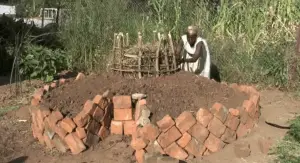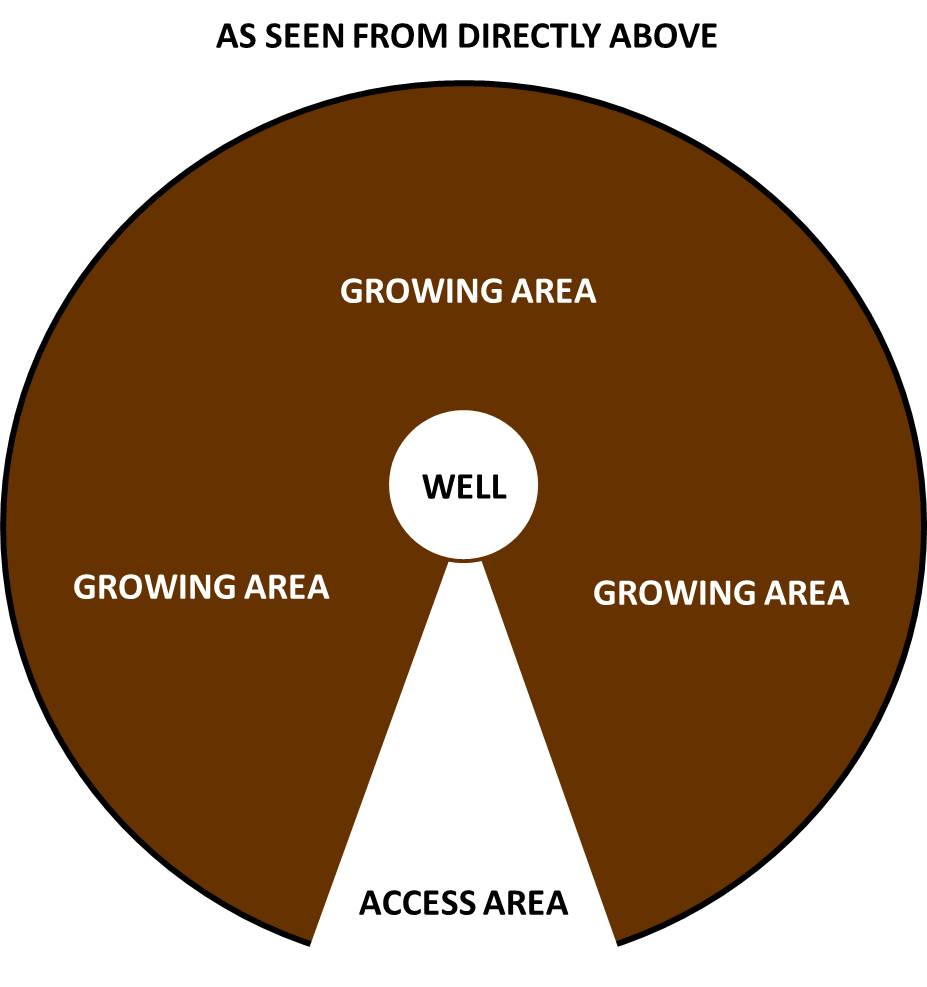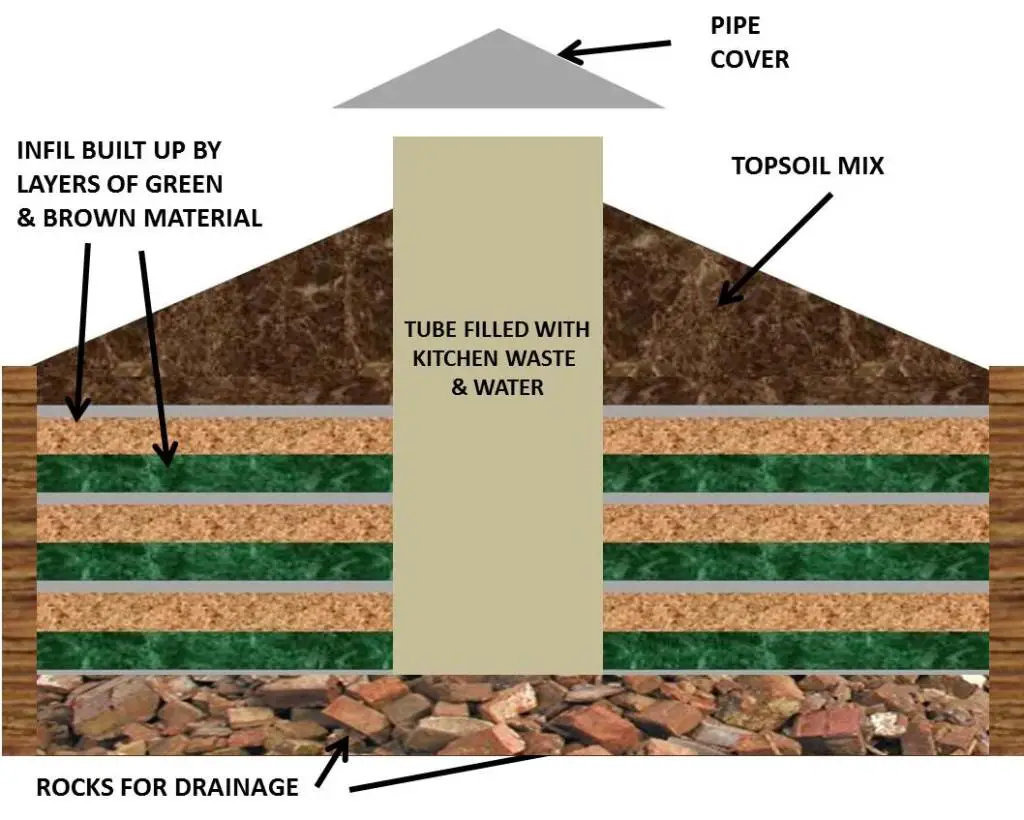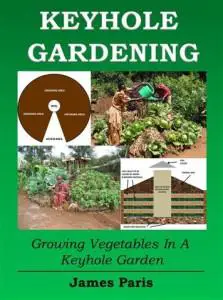Growing Vegetables In A Keyhole Garden
Have you heard about Keyhole Gardening ? Popular niche gardening methods such as Raised Bed Gardening, Container, or Square Foot Gardens for growing vegetables, are fairly well known. The idea that you can get maximum results from minimal effort appeals to most people – and gardeners are no exeption 🙂
for growing vegetables, are fairly well known. The idea that you can get maximum results from minimal effort appeals to most people – and gardeners are no exeption 🙂
However another very successful method for growing vegetables in otherwise trying conditions, is a method known as Keyhole Gardening. This method has been widely used and promoted throughout Africa and elsewhere by the Christian charity Send A Cow (www.sendacow.org ), who first coined the phrase ‘Keyhole Gardening’
), who first coined the phrase ‘Keyhole Gardening’
A glance at the picture should suffice to explain why the term ‘Keyhole Gardening’ has been adopted – but just in case….From above it forms the shape of a keyhole!

This diagram will show the ‘keyhole’ aspect a bit clearer..

What Makes Keyhole Gardens Different?
The main thing in fact that sets this idea apart from the others is the way in which it is accessed, and the central Well that feeds the whole bed. This ‘Well’ is rather ingenious and certainly helps to get the biggest ‘bang for your buck’ when it comes to vegetable production.
One of the biggest costs in gardening can be the fertilizer needed – especially in poor soil weak in nutrients. The central Well in the Keyhole Garden allows for the input of organic waste material, in such a way as to ensure a continued ‘top up’ of nutrients that will keep your veggie bed nutrient-rich and a real powerhouse of production.
As in most of the best niche gardening methods, or small vegetable garden ideas, this method utilises locally found materials in order to reduce the initial construction costs. The infill itself is also sourced locally whenever possible from ‘waste’ material mostly (store-bought compost is not readily accessible in most remote villages!).
The concept is in fact very similar to lasagna gardening or Hot Bed gardening techniques inasmuch as the infill is laid out at the beginning of construction in pretty much the same way.
The diagram below taken from my up-coming book on Keyhole Gardening (quick plug here!) shows the laying system that is employed in the making of a Keyhole Garden.

Servicing & Access:
As mentioned above. The other main factor of this type of construction compared to say a typical Raised Bed Garden , is accessibility. As the Keyhole Diagram shows, this central Well is accessed by the passage that is formed. This also allows access to the vegetables on either side and any within arms-reach around the centre.
, is accessibility. As the Keyhole Diagram shows, this central Well is accessed by the passage that is formed. This also allows access to the vegetables on either side and any within arms-reach around the centre.
The rest of the growing area is within arms-reach from around the outside – the slope to the centre making it even more so. This aspect is essential not only for picking the vegetables, but also for general plant maintenance.
How Does A Keyhole Garden Work
Once the actual construction has been accomplished either with stone, timber, or even corrugated steel sheeting (the idea being to recycle whatever is on hand); the central well plays a major part in keeping the soil rich enough in nutrients to feed the whole bed.
The bed itself being filled as per the diagram with a mix of ‘green’ and ‘brown’ materials. Roughly speaking ‘green’- grass cuttings, veggie cuttings, animal manure (herbivores only), food scraps etc, adds the nitrogen. Whilst ‘brown’ material such as cardboard, dry grass, fallen leaves, hay, straw etc, adds the carbon and forms the bulk of the compost or growing medium. Check out this article on composting..
A covering of top-soil gets the whole lot started and ready for planting – even as the base is rotting down. As mentioned, this is similar to a lasagna or Hot Bed garden technique.
or Hot Bed garden technique.
The central Well is used to add kitchen waste water or ‘grey’ water direct to the internals of the bed. This helps with the spread of nutrients through-out the growing area. As the kitchen waste decomposes it assures a steady flow of nutrients.
Growing and planting in a keyhole garden is carried out in pretty much the same manner as any other veggie bed, but with a lot less manual back-breaking labour, owing to the height of the bed more than anything else.
Overall the Keyhole garden is definitely something to consider if you have limited space to spare, or if your soil is particularly poor quality for growing vegetables.
Check out the Send A Cow site HERE for more info – or checkout my own book with full details on building, planting, and operating, here..KEYHOLE GARDENING EBOOK
– or checkout my own book with full details on building, planting, and operating, here..KEYHOLE GARDENING EBOOK

